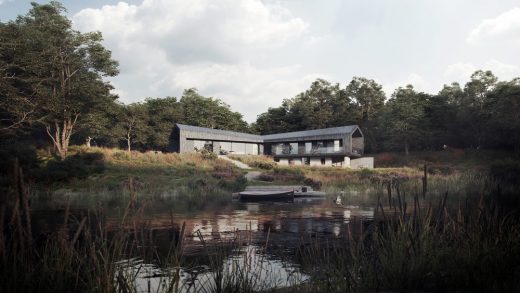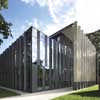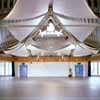Salisbury Cathedral Building, Bishops Palace Wells, Wiltshire Religious Architecture Project, Info
Salisbury Cathedral + Bishops Palace & Gardens in Wells
Religious Building in Wiltshire, England, UK
6 Sep 2011
Salisbury Cathedral Building
20/20 – Salisbury Cathedral / Bishop’s Palace
20/20 Encourages Visitors To Explore World Renowned Sites
Two medieval sites of national significance are undergoing projects to share their history through more accessible means.
Salisbury Cathedral and Bishops Palace & Gardens in Wells are undertaking prestigious projects with 20/20 – a Cornish Design and Build company based in Falmouth, to draw people into their grounds and encourage exploration.
Salisbury Cathedral Building:

image from 20/20
Following their work with a number of visitor centres and organisations such as the National Trust and Forestry Commission, 20/20 were chosen based on their strong reputation for implementing schemes that address interpretation and “wayfinding” needs which are sympathetic to special environments.
Salisbury Cathedral has a great deal of historical and religious significance which attracts pilgrims and tourists to explore one of the finest Medieval Cathedrals in Britain, set in the largest Cathedral Close. Interpretation and highly adaptable signage is needed throughout the site as the cathedral is in constantly changing use throughout the day. Internal signage must be flexible, lightweight and easy for staff to change, so materials suitable to the 750 year old environment have been researched and sourced.
The cathedral is renowned for having Britain’s tallest spire but also draws many visitors to see the finest original copy of the Magna Carta, which is displayed in its Chapter House. However, more than a historical monument, it remains a living church and a place of prayer.
David Coulthard from Salisbury Cathedral said, “Salisbury Cathedral is known worldwide and is a centre of pilgrimage for hundreds of thousands of visitors every year as well as being the mother church of the Salisbury Diocese. As such, interpretative displays and orientation signage need to be sympathetic to the environment and of the highest quality, but also capable of changing their function quickly in this very busy space. After a careful selection process we are delighted to be working with 20/20 who displayed a great deal of experience in this area and the ability to find innovative solutions that we hadn’t thought of. We look forward to the results.”
Salisbury Cathedral Building:

image from 20/20
Whilst their work with Salisbury Cathedral takes in all of the design, fabrication and installation stages both externally and internally, 20/20’s work with Bishop’s Palace focuses on developing external interpretation, working alongside the Bishop’s Palace Trust’s museum designer – Henry Lyndsay, to develop the original design concepts.
Home to the Bishops of Bath & Wells for over 800 years, the Bishop’s Palace remains at the heart of the Anglican diocese and is an important heritage tourist attraction. Its architecture dates back to medieval times, some in romantic ruin, with a moat around the grounds. Literally in the shadow of Wells Cathedral, Bishop’s Palace is often missed by the multitude of people that visit the city and many who do visit leave after a short duration, with limited understanding of the site’s historical importance and purpose. 20/20’s experience and expertise has been called upon to address external interpretation to help remedy these problems.
Sarah Duthie from Bishop’s Palace said, “The Bishop’s Palace has a unique heritage that stretches back into the early centuries of the first millennium. The site receives very few visitors and The Palace Trust recognises that inadequate interpretation is one of the barriers to access. We have commissioned 20/20 to help attract new audiences and increase visitor numbers. This objective sits alongside commitments to conserving the built and landscape heritage, to providing new community benefits, and to protecting the special atmosphere of the site.”
Design Manager of 20/20, Hannah Linford, explains the importance of careful designs for sites such as these: “Positioning, structure and materials are crucial to ensure that the solutions are sympathetic to environments that have religious and historic significance. Bishop’s Palace is an important site as the grounds contain prehistoric wells which give the city its name, and visitors are welcome to explore. But the Palace was originally built to keep people out – there are fortress gates, then a moat, then more fortress gates! Our designs aim to welcome people in and then lead them through the site, with low level interpretation to help minimise the impact on photo opportunities.”
For further information regarding 20/20’s designs and building projects, please visit http://www.2020projects.com For further information about the Bishop’s Palace, please visit http://www.bishopspalace.org.uk For further information about Salisbury Cathedral, please visit http://www.salisburycathedral.org.uk
Salisbury Cathedral image / information from 20/20
Location: Salisbury Cathedral, England, UK
Salisbury Buildings
Kite House, near Salisbury Cathedral
Design: AR Design Studio, Architects

rendering : Nu.Ma
Kite House on the River Avon
Bourne Hill Offices
Design: Stanton Williams

image © Hufton+Crow
Bourne Hill Offices
Salisbury Playhouse building
Design: Tim Foster Architects

photograph : James Morris
Salisbury Playhouse building
Salisbury Market Place
Design: Letts Wheeler Architects
Salisbury Market Place
Wiltshire Buildings – Selection
Royal Arthur Park – retirement community, Corsham
Design: ORMS
Corsham building
Wellington Academy, Tidworth
Design: BDP
Wiltshire school building
National Trust Headquarters Wiltshire
Comments / photos for the Salisbury Cathedral Building page welcome

